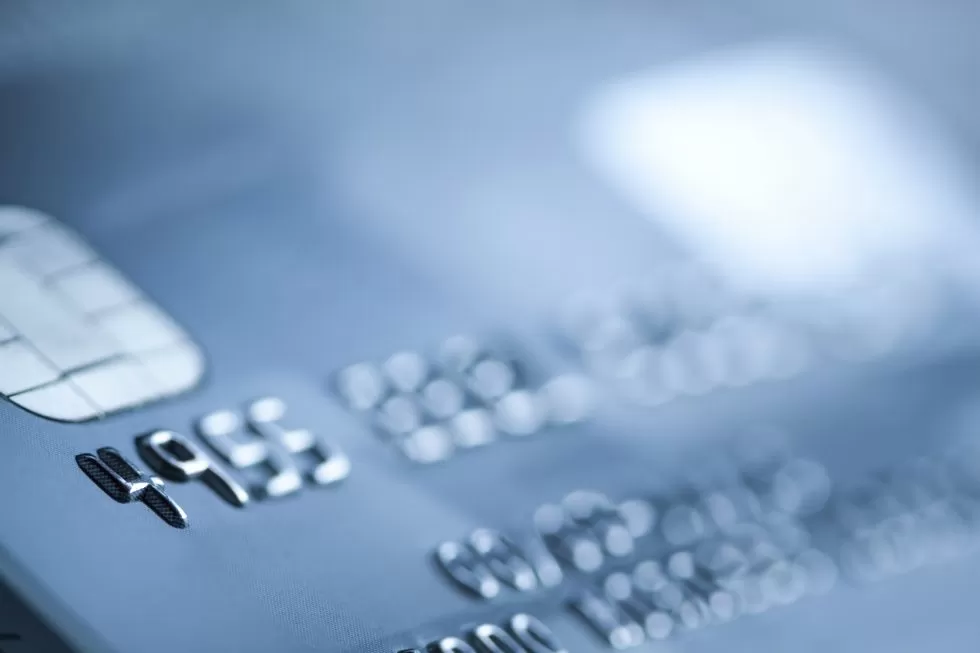There is a reason why businesses are investing heavily in customer behaviour prediction – customer insights are guiding almost all business processes.
An accurate predictive analysis can lead to an effective marketing strategy, which, in turn, can result in better brand growth and greater revenue. Knowledge of how to predict customer behaviour is essential in today’s market, and knowing how to apply this knowledge will only benefit your brand.
This article offers a simple yet crucial look into customer behaviour analysis, alongside customer loyalty in ecommerce, to better your understanding of prediction and allow you to enhance your customer’s journeys and grow your business.
A recent study by Alteryx and AbsolutData found that customer behaviour analytics is used for boosting sales/marketing by 69% of marketers. Additionally, 63% of them use it for customer satisfaction and 46% for customer loyalty.
Thus, using customer behaviour analytics can help in growing your brand. But before we discuss the topic at hand, as well as some in-depth information about your customers, let’s get an understanding of the basics of customer behaviour prediction.
What are Customer Behaviour Predictions?
Customer behaviour prediction describes the ecommerce customer journey that takes place during their buying session – whether they are researching, choosing or buying a product or service. By predicting the customer’s behaviour during their time on your platform, you can begin to fabricate a way to lead them to your end goal of more business – this could be a sale, an extra subscription or a booking.
How to predict customer behaviour comes down to an overall quantitative and qualitative assessment of how customers engage with a brand. We have categorised this idea into three types:
- Descriptive analysis: Evaluation of customers’ past interactions with a brand
- Predictive analysis: Prediction of customers’ future course of action
- Prescriptive analysis: Indication of the best recourse for a brand
Customer behaviour prediction is another name for predictive analysis. It involves analysing current and historical facts to anticipate a customer’s behaviour and actions even before they occur. Here are some examples of customer behaviour prediction:
- Your grocery-ordering app pings you if you’ve missed adding your favourite cereal to the shopping cart.
- Your telebanking call automatically switches to the language that you always select.
- Your preferred ecommerce payment method gets highlighted at checkout time.
Now that you’ve understood what customer behaviour prediction means, let’s take a look at how it can help brands.
Why Is It Important To Analyse Customer Behaviour
Many things affect customer behaviour, especially in the modern day when browsing and visiting multiple platforms is easily available. If a brand needs to survive and thrive in this ultra-competitive era, it needs to understand social proof and behavioural influences to have a good grip on its customers. Customer behaviour prediction utilises the numerous “digital footprints” left by customers to help brands stay a step ahead of their customers.
Below are the three main benefits of predictive analysis for brands.
1. PRECISE SEGMENTATION OF AUDIENCES
While CRM systems provide basic information about customers, predictive analysis pulls dynamic data about a customer’s evolving tastes and behaviours.
Numerous variables are weighed to create a fluid customer persona. This persona is more meaningful than an obsolete one, which is based on vague demographics and past transactions.
Equipped with the power to predict, businesses can define the actual “value” of a customer, and then make an efficient decision on whether it makes sense to invest effort and time to nurture a customer too. In this case, brands can identify high-value groups that are amenable to further selling tactics, such as upselling and cross-selling.
Intelligent segmentation can also direct brands towards buyer groups that are more willing to share their positive shopping experiences with others. With little nurturing, these spenders can become brand promoters and advocates. They can help create a positive brand image and bring in new customers – overall resulting in more success in revenue.
But please be aware that segmentation is marketing marginalisation, and hyper-personalisation, the ability to target products to a specific individual, delivers 20x greater return and therefore should be your ultimate goal.
2. PERSONALISED MARKETING EXPERIENCES
Not all customers have the same expectations from a brand. If a business understands its customers and the factors impacting their behaviour, it can create customer experiences that are designed to delight. Satisfied customers often perform repeat purchases, so this is a sure-shot way to secure customer loyalty and retention.
Previous to this topic, brands relied on guesswork or assumptions to gather customer intelligence. Then they shifted to vague data sources such as point-of-sale or customer demographics. Today, brands are using advanced channels such as AI machine learning, and device-generated data, alongside behavioural detection tests driven by the customers themselves, like AB testing strategies, to understand their audience better.
Earlier, brands relied on guesswork or assumptions to gather customer intelligence. Then they shifted to vague data sources such as point-of-sale or customer demographics. Today, brands are using advanced channels such as AI, device-generated data, and social media analytics to understand their customers better.
Customer behaviour prediction rests on deep learning, which is a subset of AI. Deep learning involves building a layered (or neural) algorithm that can process mammoth databases of variables. When marketers feed variables about past, existing, and potential customers into the deep learning model, they get a near-perfect prediction about the tastes and motives of each customer.
Armed with this AI-powered knowledge, brands can come up with content, products, and other offerings that are tailored to meet the expectations of each target group and convert them faster. Platforms like Cortex, Hootsuite, and Zoho Social have AI-enabled features that can optimise your content according to audience needs and preferences. Hyper-personalisation software takes this one step further and delivers the product selection for each consumer for you, delivering it to inboxes at the perfect time.
To illustrate this point better, let us consider the example of Netflix. The OTT megabrand has a robust AI-based content recommendation system. Netflix claims that its algorithm is so strong that it influences 80% of the total content consumed by its subscribers and saves more than one billion USD yearly in value from customer retention.
Personal product selection for each consumer
By hyper-personalisation, we don’t mean segmenting audiences into pre-determined groups that “might” happen to be the best group to buy a new line of products. No, we mean the selection of products that offer every individual, products pertinent to what they have bought or looked at, which a predictive analytics algorithm has calculated are the most likely ones for them to buy next. This is a hugely distinct way of nurturing your customer satisfaction and building close personal relationships with everyone, coming back to whether that be for 5,000 or all 5 million of them. But it is all about relevancy, not loyalty.
The statistics for this treatment of email marketing have been calculated by both McKinsey and Statista and deemed to be as much as 20x the returns currently enjoyed by traditional email marketing ESP, omnichannel and triggered solutions combined. This is where the enterprise people prick their ears up, as this is a whole tranche of marketing that many of them are not yet addressing currently, still believing it is covered by the efforts and solutions offered by their existing providers.
Consider how pertinent to your marketing efforts, and the feeling your customers enjoy when they get an email from you, using this software. Because it is a martech solution, that email will always be personal to that individual. It doesn’t matter whether the last time they visited your website was last night or last week, what they looked at was being captured, not just to flog that product, but to rank it in order of highest buying propensity. There’s no point sending details of the last item they looked at, if it doesn’t fit into that individual’s buying criteria, a unique pattern personal to every one of us, that needs to be learnt. A human can’t do that, but your newly installed software algorithm can.
Truly autonomous solution
Autonomous, just like the cars of the imminent future will be, your hyper-personalised email marketing can be left to run itself. When your business is gathering momentum, and you begin to appreciate the value of email marketing, you commonly fall into the pit of affording staff. We published an article to help you calculate how much your staff really cost.
You need to be able to check in on your PPS from time to time, to satisfy yourself that it is both running and indeed working well. Once established it’s great just to be able to enjoy building your business knowing this is perpetually running in the background without supervision or issue. Take your days off with your friends and family, enjoy your holidays and spend your time and effort on other aspects of the business where and when it is needed. This is one box that is now ticked.
How To Predict Customer Behaviour
When taking into account all that we’ve covered in this article, we can now look at the action you need to take to predict customer behaviour, to drive your sales and conversions.
Increase Customer Retention
Customer retention is a key measurement in helping you to assess and understand the customer’s journey and their experiences. Keeping your customers involved in your brand both relationally and through transactions is the main goal here – so follow-up and post-purchase reassurance – cognitive dissonance is vital to CLV.
Encouraging your customers to stay to reduce lack of retention comes in the form of personalised messages (email and SMS marketing) to allow brand recognition and increase that online customer engagement cycle.
Use Product & Service Feedback
The best way to get into your customer’s mind is simple – just ask. Using a customer feedback survey is an easy way to gain insight into your products and services, whilst allowing your customer to feel significant in your customer service process. By analysing the qualitative feedback given, you can target the customer’s needs and predict customer behaviour at the source. The customer is always right.
Track Your Brand’s Health
Tracking your brand’s performance is at the height of importance when attempting to understand your audience’s behaviour and provides a consistent benchmark for the future of your business, especially when you’re trying to gauge certain tactics and changes in your brand presence. Analytical platforms, such as Google Metrics, are easy to use and will pinpoint when and where your conversions are being positively or negatively impacted, giving you a further understanding of your audience’s behaviour.
What Are The 3 Types of Customer Decision Making
Consumer decision-making can be categorised into three sections – nominal, limited, and extended. Consumer problems arise in specific situations (from grabbing a sandwich to purchasing a TV) and may trigger one or more levels of these three consumer decision-making tiers.
- Nominal
These decisions tend to be made around low-cost products and services, as well as repetitive purchases and purchases from well-known trusted brands – basically, any purchase that requires little effort in decision-making.
Nominal decision-making, however, doesn’t always start as nominal. We all have to familiarise ourselves with our favourite go-to products and brands for them to become our favourites. And so ‘nominal’ decision-making develops over time.
In this case, you want your brand to feel like a household name, so finding the balance between useful advertisement and over-marketing is key.
E.g. Your usual shampoo.
- Limited
At this stage, customers are slightly more involved in their decision-making compared to nominal decision-makers. Although these customers aren’t researching products or services in depth, they take a longer amount of time to ponder whether they should buy or abandon.
The products involved in this tier of decision-making tend to be mid-cost, but should still hold some familiarity with the customer. For example, they have heard of the brand, but they may search for consumer reviews of the product. Therefore reviews and testimonials are a great tool to help your customers with ‘limited’ decision making and can perhaps drive them to use that same product in the future.
E.g. A great brand of shampoo that happens to be on offer.
- Extended
Extended decisions are made around more expensive products and services, most likely purchased for a specific reason rather than for necessity. This involves a lot more research and reliability on other customer’s reviews, as well as useful in-depth information before committing to a purchase.
Customers who are making ‘extended’ decisions feel more at risk because of the time and/or money they may eventually spend on the product, so this means that as a brand, you should utilise a great social brand presence, follow-up emails and other customer retention strategies to build trust on ecommerce trust.
E.g. An expensive shampoo – tried, tested and used by your favourite celebrity’s stylist.
We offer some great examples here on luxury marketing getting it right, with these decision-making behaviours in mind.
What Are The 7 Types of Customers?
Your customer base can be segregated into each, or a combination, of the following seven traits. They are equally important to recognise when tailoring your ecommerce customer journey and will aid you in predicting their behaviours and habits.
- Loyal Customer
This is your most important customer. This is the customer that continually returns to your brand to browse and purchase your products or services. This customer is more likely to spread the word about your brand through word of mouth or by providing customer feedback (whether that’s a review on your site or recommendations across social media platforms). Great customer service management involves nurturing the individual – using certain reward systems, like special offers and loyalty discounts, as a way to preserve loyal consumers.
- Need-Based Customer
This customer is purely using your brand to fulfil a certain need, when they need it, so a quick and sufficient experience is expected. They are visiting your platform for a fixed reason so extended interactions or upselling will be difficult when dealing with this customer. They are reliable in terms of reducing your cart abandonment rates, however, the long-term goal would be to build good personal interactions with this customer so that they are more likely to use your products and services again – in turn moving them to the ‘Loyal Customer’ band.
- Impulsive Customer
This is the most emotionally driven customer, and are purchasing because they want to feel good and/ or fulfil a desire. Therefore, their customer journey needs to be smooth and uncomplicated so that they aren’t deterred from that initial urge to buy. It’s important to remember that this customer will require quick access and an easy checkout process, to keep the momentum of the desired sale in effect.
This customer, however, is quite likely a great candidate for upselling – this is because they are already driven to commit to some sort of purchase, so any ‘extras’ would most likely be welcomed. The ‘impulsive’ customer is a great candidate for call-to-action emails (or CTA), to encourage them to follow through with their desired purchase. Find out more about ecommerce CTA here with SaleCycle.
- New Customer
This customer has experienced your platform and product/ service for the very first time – are you confident they would re-visit and use your brand again? Making your brand memorable and reliable is always the key to sales success, especially after that new customer purchase. Follow-up emails, campaigns and social media-driven advertisements will help to reel this customer back into your sales funnel.
- Potential Customer
Browsing between sites and abandoning baskets are the common traits of this customer. This customer may not have a burning need for your product or service, or they may still be in the early stages of researching the product they want to commit to. So by giving this customer helpful and accurate information, alongside browse abandonment alerts, you can help them to decide that your brand would be the best product for value.
- Discount Customer
The price of your product, over the product itself, is the most important feature of the sale for this customer. They are the most competitive customer, drawn in by sales and the best offers. If they have chosen to purchase your product, it’s most likely because they consider you to be the best value, compared to the other brands they have already researched. Therefore it is important to keep this customer in the know when it comes to your most recent price changes and offers.
- Wandering Customers
This customer doesn’t know they’re a customer – and it’s up to you to change that mentality. Their browsing habits are sporadic and have no specific drive, however, this can be changed with enticing sales tactics to increase online customer engagement.
Want to Know More about Customer Behaviour Prediction?
Can Customer Behaviour Change?
Consumer beliefs and behaviours are ever-changing. Whether this is down to social or economic changes in our surroundings, it’s important to try to stay with (or ahead of) the movement by focusing on customer insights. Try utilising Google metrics, as well as keeping aware of current climates and trends.
What Are Customer Behaviour Metrics?
The value of customer behaviour analytics can be measured by several key metrics. We suggest that some of the best metrics and key performance indicators include:
- Increased customer acquisition and conversion rates.
- Higher customer retention.
- Larger average sale on initial purchases.
- Increased number of purchases per customer.
- Repeat purchases.
- Increased lifetime value of customers.
Customer Behaviour Prediction Models
The predictive behaviour modelling system is based on the fact that the behaviour patterns of individual consumers, as well as consumer groups, frequently change over time.
The “segment route history” of each customer is an extremely important factor in predicting how customers will behave in the future – in other words, to predict future behaviour, you need to track the route they have already taken.
Conclusion
In a saturated market ecosystem, brands will need to outthink each other to sustain. A brand that has a pulse on its customers can outperform competitors by a wide margin.
Such a business can strategically plan its next marketing move and product line. This can also mitigate business risks to a large extent and help you grow your brand.
Any of our team would be happy to chat through this with you, and detail relavancies to your specific veritical industry and competitors. Please get in touch.





